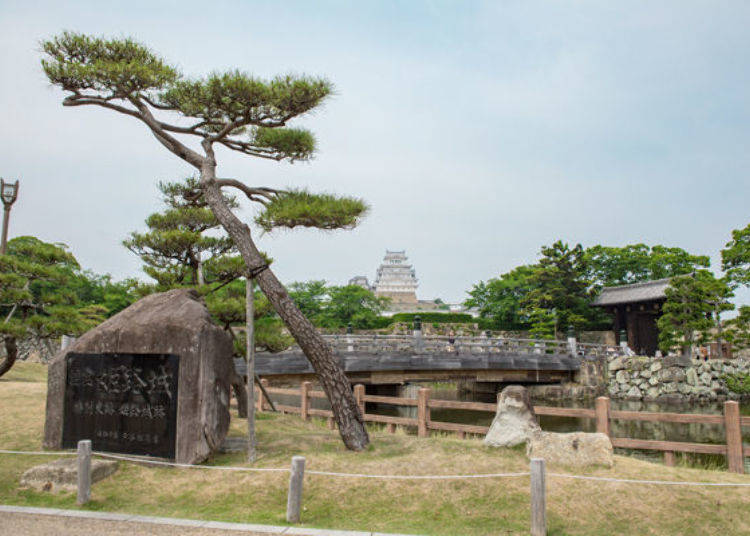
Himeji Castle is a national treasure located in Himeji City, Hyogo Prefecture. To this day, Himeji Castle still retains its beautiful appearance, especially the Keep, which was constructed in 1609, and tourists from around the world come here not only to appreciate its historical value but also to see beautiful traditional Japanese scenery.
Here we will introduce what to see in Himeji Castle and also the superb scenery to be enjoyed at Koko-en Garden.
Getting to Himeji Castle
Himeji Castle is about a 20-minute walk from JR Himeji Station. The castle sits atop Himeyama from where it could observe all the doings in the town and has become a symbol of Himeji City.
Himeji Castle History

▲ You can see the Main Keep from the moment you enter the Himeji Park located on the grounds of Himeji Castle
Himeji Castle was designated a UNESCO World Cultural Heritage Site in 1993, the first-ever in Japan, and is also a designated National Treasure and an Important Cultural Property noted for being a masterpiece of architectural technology.
This is historically a significant structure as construction mainly of the Main Keep, the turrets, gates, earthen walls, as well as the stone walls and moat are all very well preserved.

As it stands today, Himeji Castle was built in 1609 by Terumasa Ikeda, who was married to Tokuhime, the second daughter of Ieyasu Tokugawa.
When Himeji suffered air raid damage during the Pacific War, it miraculously avoided being destroyed by fire. As a result of ongoing repairs and restorations, it today remains pretty much in its original state.

Himeji Castle got its start actually much earlier in 1346 during the Northern and Southern Courts period when warlord Sadanori Akamatsu had a fortification built in an area of Himeji called Himeyama.
At the time, it was more like a small fort than a castle, and it was later during the Age of Warring States (also known as the Sengoku Period) that it was expanded and made into a citadel by the warlord Shigetaka Kuroda.
Furthermore, after that, it was governed by various warlords and feudal lords, such as Hideyoshi Hashiba, who later took the name Hideyoshi Toyotomi, each repairing and expanding the size of the castle.
As constructed by Ikeda, the castle was actively maintained through a succession of lords of the castle until the Meiji Period. So, counting from the time of Akamatsu, the castle actually has a history of more than 670 years.
I briefly mentioned the warlord Shigetaka Kuroda of the Age of Warring States a moment ago. The name might ring a bell with those familiar with history. He was the grandfather of Kanbei Kuroda, a vassal of the…

